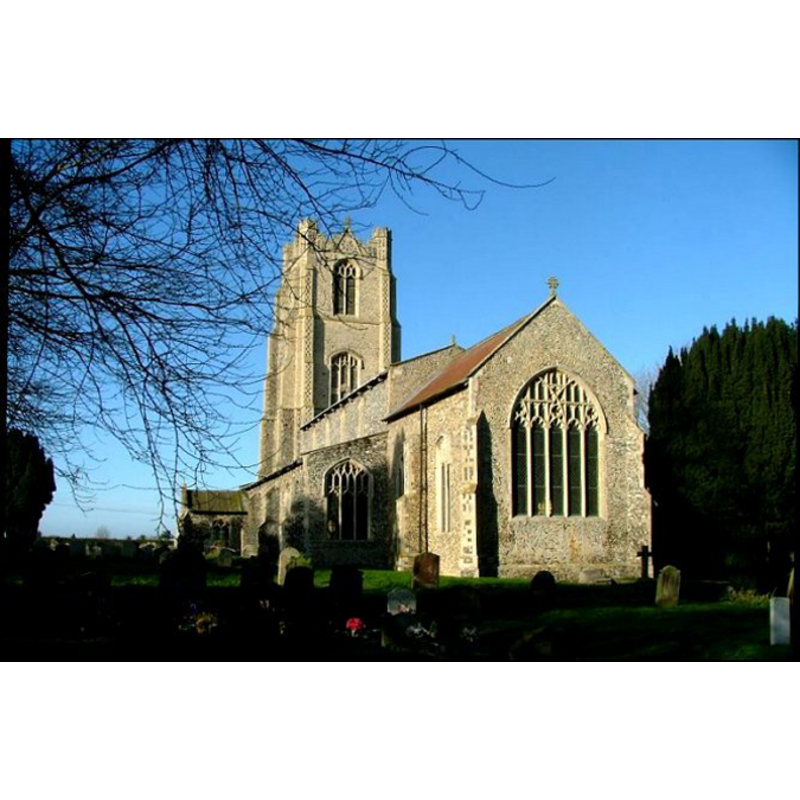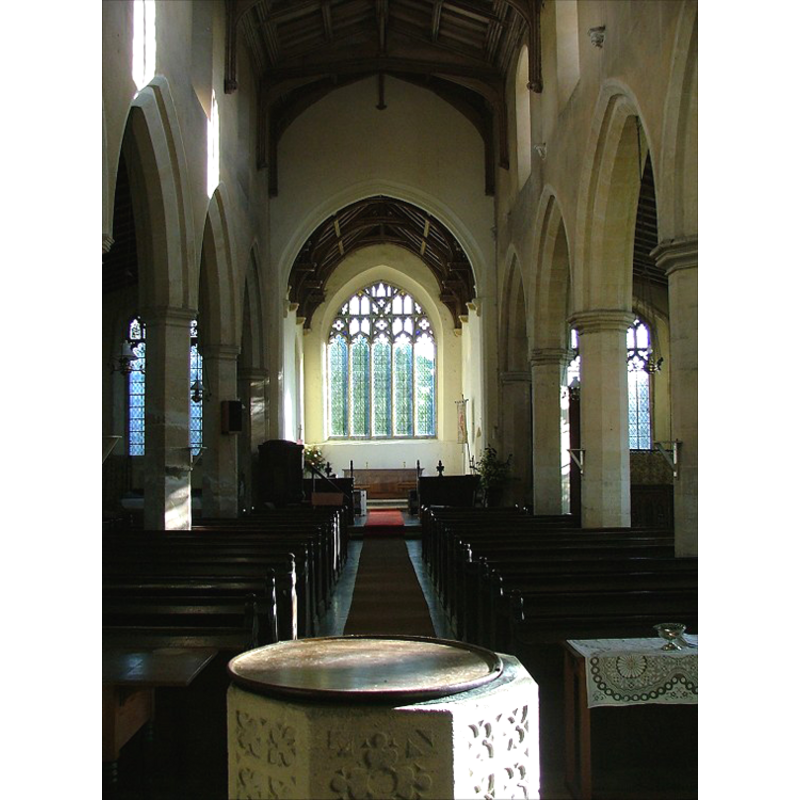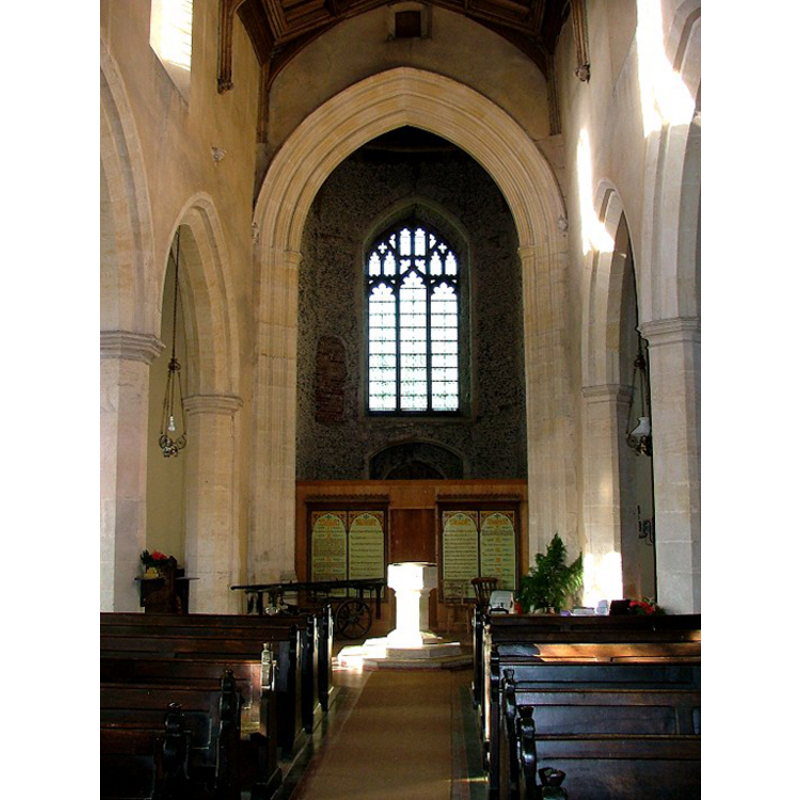Deopham / Depham / Diepham

Image copyright © Simon Knott, 2006
Standing permission
Results: 6 records
design element - motifs - moulding
design element - patterns - tracery
view of church exterior - southeast view
view of church interior - nave - looking east
view of church interior - nave - looking west
INFORMATION
FontID: 12781DEO
Object Type: Baptismal Font1
Church/Chapel: Parish Church of St. Andrew
Church Patron Saints: St. Andrew
Church Location: Vicarage Road, Deopham, Norfolk, NR18 9DR
Country Name: England
Location: Norfolk, East Anglia
Directions to Site: Located off the A11, 5-6 km N of Attleborough
Ecclesiastic Region: Diocese of Norwich
Historical Region: Hundred of Forehoe [aka Forehou]
Font Location in Church: Inside the church, at the W end of the nave, centre aisle
Century and Period: 14th century, Decorated
Cognate Fonts: [cf. FontNotes]
Credit and Acknowledgements: We are grateful to Simon Knott, of Norfolk Churches, for his photographs of this font.
Font Notes:
Click to view
Blomefield (1805-1810) writes: "The Church is dedicated to St. Andrew; when Norwich Domesday was made, the rector had a house, manor, and carucate of land; the vicar had a house and 3 acres of land, the vicarage was valued at 6 marks [...] The church is a good fabrick, having a large tower and five bells; the north and south isles and chapel are leaded." Blomefield (ibid.) names "Robert" as first recorded vicar here, in 1146. Tyrrell-Green (1928) notes a group of fonts in which "the geometrical or curved tracery occurs, not exactly in the same form as in the windows of the style, but adapted so as to fill square panels upon the sides of an octagnal font. The fashion is most common in Norfolk, in which county there are proportionately a greater number of fonts of this period than elsewhere. Excellent examples occur at Bintry [...], Deopham, Hilborough, Oxborough, Rockland All Saints', Sheringham, and Thompson--all in Norfolk. Other good specimens of the same kind of treatment are at Barton Mills (Suffolk), Kingsworthy (Hants), and Strubby (Lincs)." Noted in Pevsner & Wilson (1999). Described and illustrated in Knott (2006). The stem is octagonal and plain but for a moulding at the top. Two-step plinth with kneeling extension on both steps. The wooden cover is flat and round; appears modern. [NB: we have no information on the font from the mid-12th century church here].
COORDINATES
Church Latitude & Longitude Decimal: 52.564059, 1.022845
Church Latitude & Longitude DMS: 52° 33′ 50.61″ N, 1° 1′ 22.24″ E
UTM: 31U 365987 5825614
MEDIUM AND MEASUREMENTS
Material: stone
Font Shape: octagonal (mounted)
Basin Interior Shape: round
Basin Exterior Shape: octagonal
LID INFORMATION
Date: modern?
Material: wood
Apparatus: no
Notes: [cf. FontNotes]
REFERENCES
Blomefield, Francis, An essay towards a topographical history of Norfolk, 1805-1810
Knott, Simon, The Norfolk Churches Site, Simon Knott, 2004. [standing permission to reproduce images received from Simon (February 2005]. Accessed: 2007-03-08 00:00:00. URL: www.norfolkchurches.co.uk.
Pevsner, Nikolaus, Norfolk 2: North-West and South (2nd ed.), London: Penguin, 1999
Tyrrell-Green, E., Baptismal Fonts Classified and Illustrated, London: Society for Promoting Christian Knowledge: The Macmillan Co., 1928


